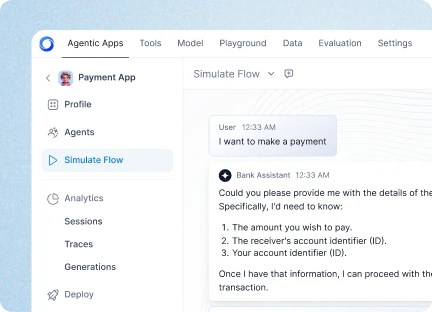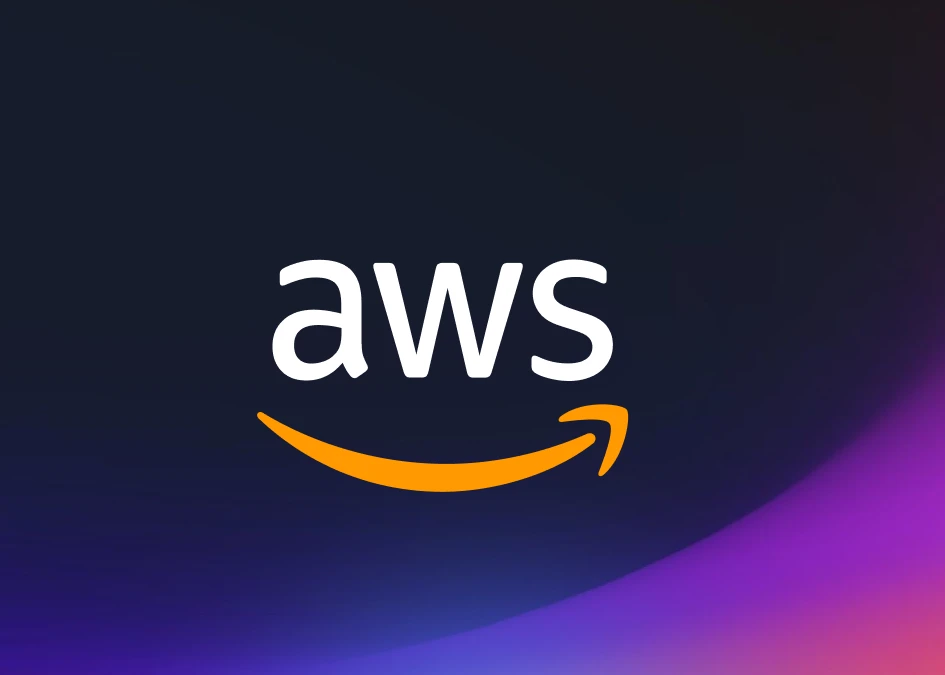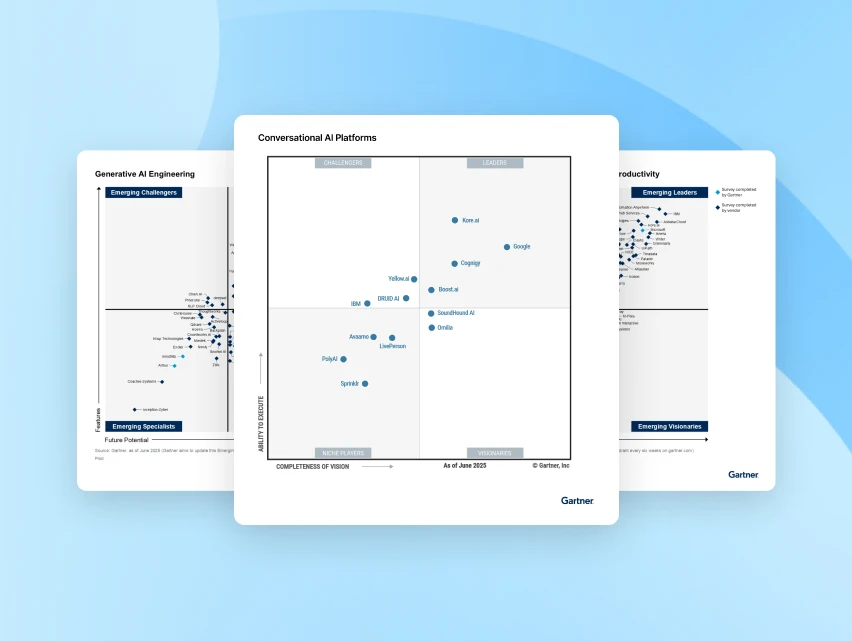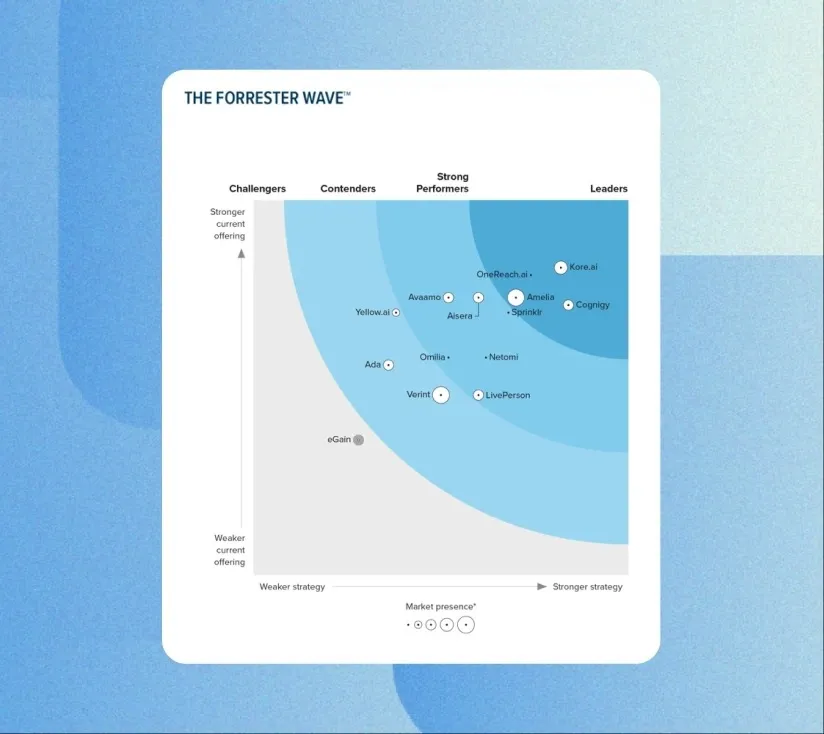Let’s be honest, most of what we call “AI adoption” today still happens in silos. A marketing system that generates insights, a demand model that forecasts supply needs, and an automation layer that streamlines operations. Each delivers value on its own, but few work together as part of a larger, coordinated whole.
Beneath these isolated systems, a deeper transformation is unfolding. Enterprises are beginning to move from using AI as individual tools to operating through networks of intelligent agents. These systems can interpret context, make decisions, and coordinate with one another in real time. They are no longer confined to a single department or application. They function across business domains, cloud infrastructures, and even partner ecosystems.
That shift introduces a new and critical question: how do these agents actually communicate? How does a planning agent developed in one environment interact with an analytics agent built in another? How can organizations ensure that the information they exchange remains accurate, secure, and interpretable at scale?
This is the new frontier of enterprise AI, centered on agent communication protocols. Think of these as the shared language that enables intelligent systems to collaborate. Just as the internet required TCP/IP to connect computers, modern enterprises need interoperable standards such as MCP, A2A, and ACP to connect autonomous systems within and beyond the organization.
These protocols are not technical curiosities. They are quickly becoming the backbone of enterprise-scale AI, allowing decision systems, data engines, and intelligent agents to work in harmony. Without them, organizations risk creating disconnected innovation, valuable in isolation but incapable of driving enterprise-wide transformation.
For business leaders, this is not a matter of technology alone. It is about building the connective infrastructure for intelligent growth. Understanding how these protocols shape collaboration, interoperability, and trust will determine which enterprises move first and fastest in the age of autonomous intelligence.
What Are Agent Communication Protocols in AI?
Agent communication protocols are structured standards that define how AI agents exchange information, context, and intent. They specify not only how messages are formatted but also how meaning and purpose are preserved across systems.
In practice, these protocols ensure that one intelligent agent can communicate with another regardless of who built it, where it operates, or what underlying technology stack it uses. Without them, enterprises would be forced to rebuild communication logic for every new platform or integration, slowing innovation and increasing operational complexity.
Why They Matter
- Interoperability – Agents built on different technologies can still exchange information seamlessly.
- Scalability – New agents can be added or replaced without re-architecting core systems.
- Governance and Trust – Protocols embed identity, authentication, and versioning for secure and auditable communication.
- Flexibility – Internal agent logic can evolve independently without breaking connections across the ecosystem.
By adopting shared communication protocols, enterprises can move from fragmented automation toward a unified model of intelligence that scales across departments, partners, and platforms.
The Three Foundational Protocols: MCP, A2A, and ACP
The current ecosystem of AI communication protocols can be grouped into three foundational models. Each addresses a different dimension of enterprise coordination and together they form the communication fabric for the intelligent enterprise.
1. MCP (Model Context Protocol): The Context Conduit
The Model Context Protocol governs how orchestrators share structured context with execution agents and connected tools. It defines how goals, constraints, and metadata flow through a network of intelligent systems.
In enterprise environments, MCP acts as the connective layer between decision logic and execution. It allows a central orchestration engine to distribute unified instructions to different agents, ensuring they work from the same understanding of data and intent.
MCP excels in cloud-based and distributed environments where scale and modularity matter. It keeps agents loosely coupled, allowing each to evolve independently without breaking the overall system. However, it requires careful schema design, consistent version control, and validation frameworks to maintain coherence. MCP is ideal when a central orchestrator must coordinate multiple specialized agents while maintaining clarity and structure.
2. A2A (Agent-to-Agent Communication): The Language of Collaboration
If MCP is about orchestration, A2A is about collaboration. The Agent-to-Agent Protocol enables direct interaction between agents, allowing them to delegate tasks, share progress, negotiate outcomes, and synchronize activity without constant oversight from a central controller.
In an enterprise context, A2A enables autonomous workflows. Imagine a pricing agent that coordinates with an inventory agent to adjust margins in real time or a risk assessment agent that consults a compliance agent before approving a decision. A2A allows these interactions to happen dynamically, turning complex coordination into a self-managing process.
The benefits are clear: decentralized collaboration, adaptive decision-making, and greater resilience. However, A2A also introduces challenges. Trust, authentication, and consistency become more complex when agents act independently. Enterprises need to invest in monitoring, identity frameworks, and negotiation logic to maintain control and transparency.
A2A is essential when enterprises want to enable distributed intelligence that can self-coordinate while adhering to shared governance principles.
3. ACP (Agent Communication Protocol): Intelligence at the Edge
While MCP and A2A dominate in cloud and distributed systems, ACP operates closer to the physical world. It supports real-time communication among agents embedded in localized or edge environments such as robotics, industrial IoT, and connected infrastructure.
ACP enables agents to discover each other, register their capabilities, and exchange data with minimal latency. It is particularly powerful in environments where responsiveness and coordination are critical, such as factory automation, logistics networks, or smart grid systems.
Its strength lies in efficiency and speed, though it can face challenges when scaled beyond its local environment. Enterprises often rely on bridging mechanisms that connect ACP-based local systems to broader A2A or MCP-driven ecosystems.
Together, these three protocols represent complementary layers of an enterprise communication architecture. MCP handles orchestration, A2A manages collaboration, and ACP governs execution within real-world contexts.

The Leadership Challenge: Governance, Trust, and Scalability
Adopting agent communication protocols is not purely a technical initiative. It is a strategic decision that touches governance, security, and organizational design.
- Schema and Version Control: As agents evolve, their data models change. Without disciplined version management, communication breaks down. Enterprises must treat schema governance as a first-class responsibility, not an afterthought.
- Security and Identity: In a world of autonomous agents, trust is everything. Each message must be authenticated, verified, and traceable. Encryption, tokens, and certificate-based identity systems are essential to maintain integrity.
- Lifecycle Management and Upgrades: Protocols will evolve. Enterprises need a way to transition between protocol versions without disrupting operations or fragmenting their ecosystems.
- Vendor Independence: Choosing open, interoperable standards helps avoid proprietary lock-in and ensures long-term flexibility as the market matures.
- Performance and Observability: Monitoring latency, throughput, and message flow across agent networks is essential for reliability. Advanced observability tools will be a cornerstone of enterprise-grade implementations.
Enterprises that address these governance challenges early will be positioned to scale their agent ecosystems confidently and securely.
The Future of Agent Protocols: Building the Nervous System of the Intelligent Enterprise
The evolution of agent communication protocols will define how organizations operate, compete, and grow in the coming decade. What we are witnessing is not simply a technical shift but the birth of a new organizational architecture, one where communication between intelligent systems becomes as critical as communication between humans.
Convergence Toward Common Standards
Just as the internet converged around universal protocols, the same will happen for AI agents. Competing dialects will eventually give way to a few dominant standards, creating seamless interoperability across industries. This convergence will transform integration from a technical barrier into a business enabler.
Layered Protocol Architectures
Future systems will adopt modular layers for communication. One layer will handle context and orchestration, another will manage collaboration, and a third will enable real-time operations. This approach will mirror how enterprises structure human communication: from strategy to coordination to execution.
Interoperability Hubs
New middleware platforms will emerge to translate and validate communication between different agent ecosystems. These interoperability hubs will become the routers of the intelligent enterprise, enabling hybrid communication across clouds, partners, and edge environments.
The Rise of the Agentic Web
Beyond single enterprises, networks of agents will begin to collaborate across organizational boundaries. This “Agentic Web” will enable autonomous discovery, negotiation, and cooperation between entities that share common goals or data frameworks. It will redefine how supply chains, financial systems, and knowledge networks operate.
Trust and Reputation Systems
As agents gain autonomy, trust will become an operational currency. Future protocols will embed reputation systems that measure reliability, transparency, and compliance. These trust frameworks will help enterprises decide which agents to rely on, much like businesses evaluate partners today.
Human Oversight and Ethical Alignment
Even in highly autonomous environments, human judgment will remain essential. Protocols of the future will include mechanisms for human-in-the-loop governance, ensuring that AI decisions align with corporate values, regulations, and ethics.
Enterprises that recognize this shift early will have a decisive advantage. By building on open, interoperable agent protocols, they can transform AI from a collection of isolated projects into a coherent, adaptive intelligence network that scales across the entire business.
Conclusion: Designing for the Decade of Autonomy
Agent communication protocols are becoming the foundation of enterprise AI. They determine how intelligent systems understand one another, coordinate actions, and maintain trust at scale. MCP provides structure and context, A2A enables collaboration, and ACP ensures precision at the edge. Together, they form the operating language of the intelligent enterprise.
For executive leaders, this is not a purely technical concern. It is a question of competitiveness, agility, and long-term readiness. The organizations that invest early in understanding and implementing these protocols will define the standards for how business intelligence is created, shared, and executed in the years ahead.
The future belongs to enterprises that can connect intelligence across every layer of their operations. The question is no longer when to start, but how quickly you can build the architecture that makes it possible.











.webp)






